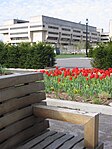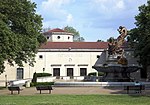Joseph M. Katz Graduate School of Business
The Joseph M. Katz Graduate School of Business is the graduate business school of the University of Pittsburgh located in Pittsburgh, Pennsylvania. Although business education had its origins at the university in 1907, the Graduate School of Business was established in 1960 from a merger of its predecessors, the School of Business Administration and the Graduate School of Retailing. It was renamed in 1987 after businessman and university alumnus benefactor Joseph Katz. The school offers a traditional, accelerated, part-time, business analytics, and executive Master of Business Administration (MBA) degrees as well as Master of Science degrees in Accounting, Business Analytics, Finance, Information Systems, Management, Marketing, Supply Chain Management and several Ph.D. programs in business. Katz is regularly ranked in the top 5% of Association to Advance Collegiate Schools of Business-accredited schools and in the top 0.3% of schools worldwide that grant business degrees.Katz is part of Pitt Business, which refers to the collective capacity of Katz and the College of Business Administration (offers undergraduate business degrees), and five education and research centers.
Excerpt from the Wikipedia article Joseph M. Katz Graduate School of Business (License: CC BY-SA 3.0, Authors).Joseph M. Katz Graduate School of Business
Roberto Clemente Drive, Pittsburgh
Geographical coordinates (GPS) Address Nearby Places Show on map
Geographical coordinates (GPS)
| Latitude | Longitude |
|---|---|
| N 40.440793 ° | E -79.953337 ° |
Address
Mervis Hall (Katz Graduate School of Business)
Roberto Clemente Drive
15213 Pittsburgh
Pennsylvania, United States
Open on Google Maps








